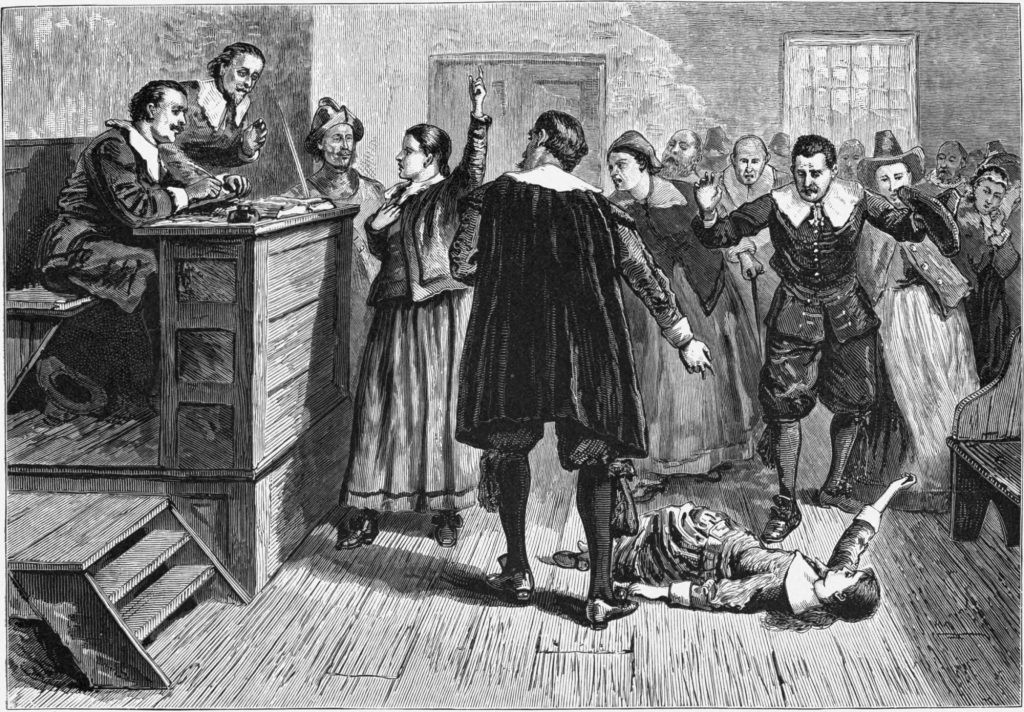 Where were the Salem Witch Trials? Historical illustration of Salem Village during the 1692 witch trials.
Where were the Salem Witch Trials? Historical illustration of Salem Village during the 1692 witch trials.
The Salem Witch Trials, a harrowing period in early American history, are synonymous with a specific place. But Where Was The Salem Witch Trials actually located? The answer lies in and around Salem, Massachusetts, a location that became the epicenter of fear, accusation, and tragedy in 1692. To understand the geography of this dark chapter, we need to delve into the settlements that played crucial roles in these events.
The Genesis in Salem Village
The Salem Witch Trials began in Salem Village, now present-day Danvers, Massachusetts. In January 1692, the daughter and niece of Reverend Samuel Parris, the minister of Salem Village, fell ill. When their condition failed to improve, William Griggs, the local doctor, was summoned. His diagnosis was bewitchment, a pronouncement that ignited the spark of the witch hunt. This small village, with its tight-knit community and existing tensions, became the initial stage for the unfolding drama. It was within the homes and meeting houses of Salem Village that the first accusations were made, and the first afflicted girls began to name their alleged tormentors.
17th-Century Massachusetts: Setting the Stage for Fear
To truly grasp where the Salem Witch Trials occurred and why they took hold, we must consider the broader context of 17th-century Massachusetts Bay Colony. Life in this era was fraught with challenges. Beyond the typical hardships of colonial existence, several factors converged to create an atmosphere of anxiety and suspicion ripe for witch accusations. A profound belief in the Devil and witchcraft was deeply embedded in the Puritan worldview. Internal divisions within Salem Village families and a simmering rivalry with the wealthier, more established Salem Town further exacerbated social tensions. Adding to this volatile mix were recent outbreaks of smallpox and the ever-present threat of attacks from warring Native American tribes. This confluence of societal pressures created fertile ground for fear to flourish and accusations of witchcraft to take root and spread beyond Salem Village.
The Court in Salem Town
While the accusations originated in Salem Village, the legal proceedings and trials themselves were conducted in Salem Town (present-day Salem). In June 1692, the Court of Oyer and Terminer, a special court assembled to address the witchcraft crisis, convened in Salem Town. Chief Justice William Stoughton presided over this court, composed of magistrates and jurors. The first victim to be tried and condemned was Bridget Bishop of Salem. Her guilty verdict and subsequent hanging on June 10th marked the beginning of a series of executions. Over the following months, the court sentenced and hanged thirteen women and five men on three separate execution days in Salem Town. These public hangings took place at Proctor’s Ledge in Salem, now recognized as the official Salem Witch Trials Memorial.
However, the Court of Oyer and Terminer was eventually disbanded in October 1692 by Governor William Phipps, recognizing the flaws in its proceedings, particularly the acceptance of spectral evidence. The newly formed Superior Court of Judicature, which replaced the witchcraft court, rejected spectral evidence. This crucial shift in legal standards led to the release of those awaiting trial and pardons for those awaiting execution, effectively bringing the Salem Witch Trials to an end.
Legacy and Location Today
Though the trials were brief, their impact was profound and lasting, forever associating the name “Salem” with this dark period. Today, Salem, Massachusetts, acknowledges and commemorates its complex history. Visitors can explore historical sites throughout Salem and Danvers (formerly Salem Village) that offer insights into the events of 1692. These locations serve as tangible reminders of where the Salem Witch Trials happened and stand as solemn memorials to the victims. From the Salem Witch Museum in Salem Town to the Rebecca Nurse Homestead in Danvers (Salem Village), these sites provide crucial context for understanding this pivotal moment in American history and its enduring lessons about justice, fear, and societal hysteria, echoing through time and reminding us of the importance of critical thinking and due process.


